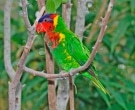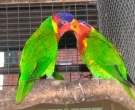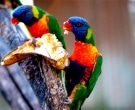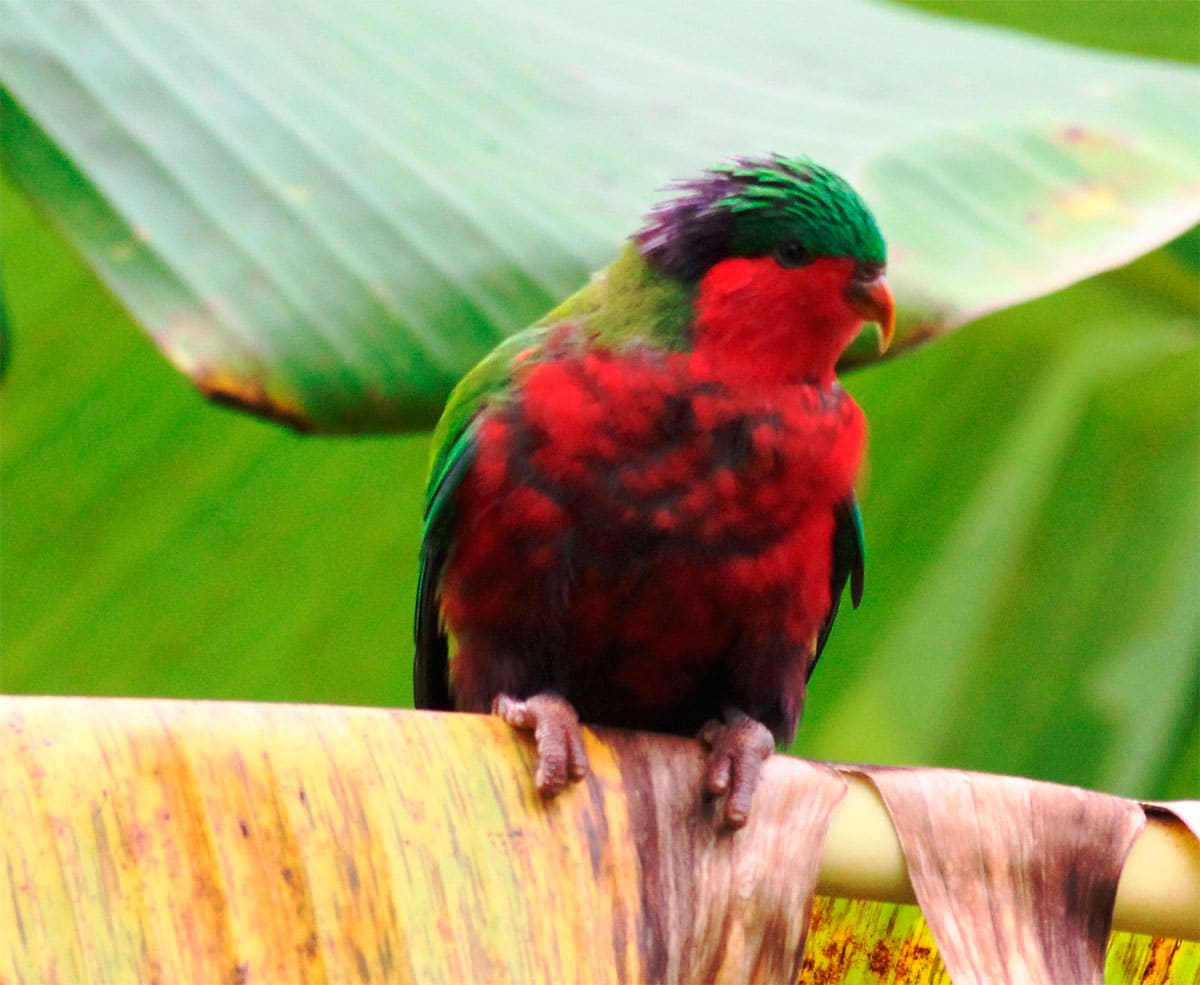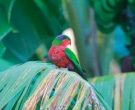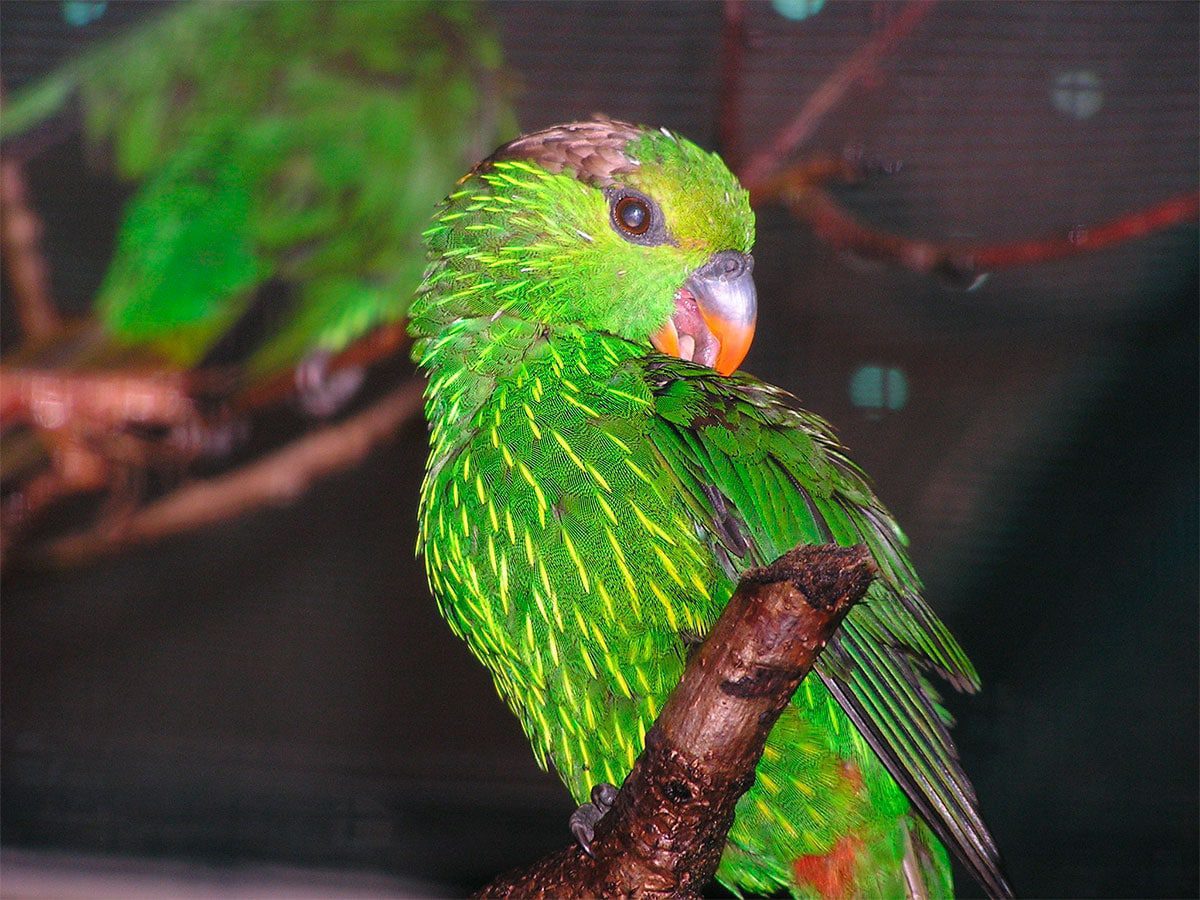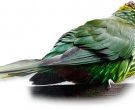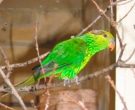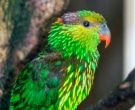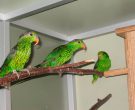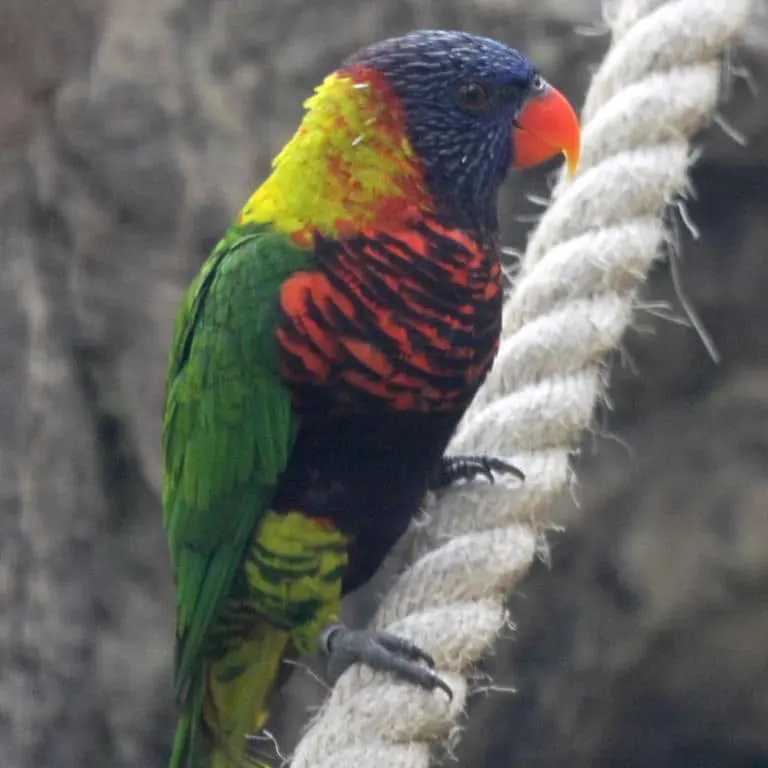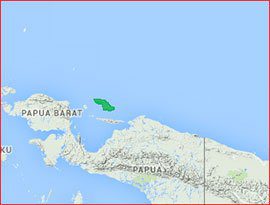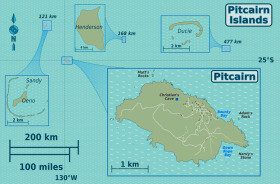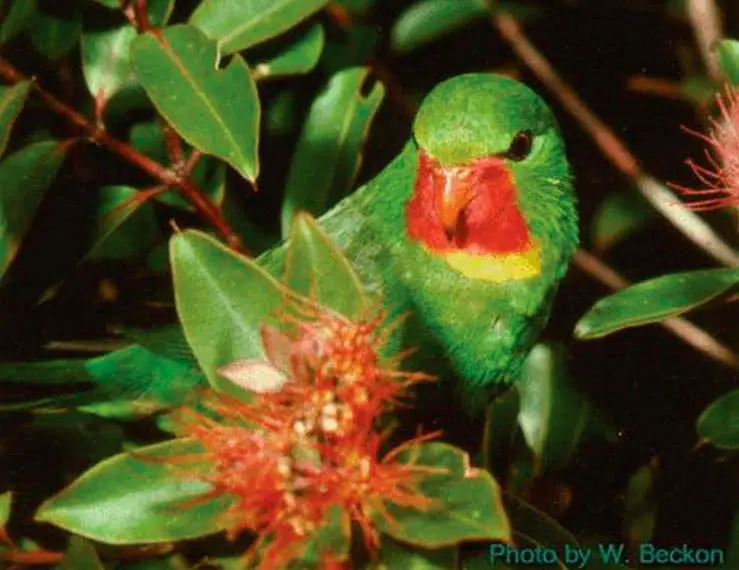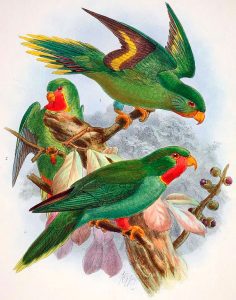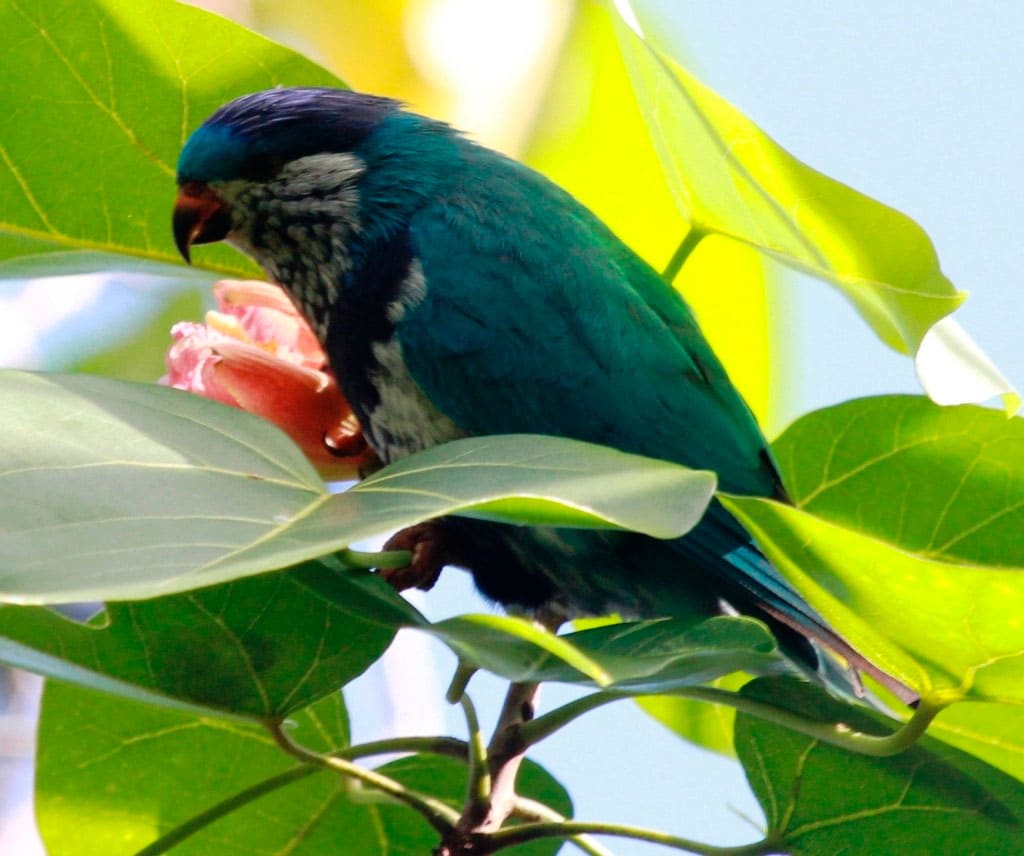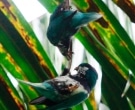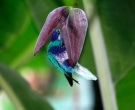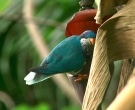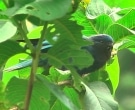Content |
|---|
Description
Of 25 cm.. length and 100 to 120 gr. weight.
The general plumage of the Ornate Lory (Trichoglossus ornatus) is green. The front, the head and feathers that cover the ears are blue. It has a small red stripe that goes from the upper right corner of the eye to the nape of the neck, It also has a yellow stripe on the sides of the neck. The throat and chest are orange-red and in each pen has a bluish-black wide table. Underwing feathers are yellow.
The rest of the bottom is green with yellowish scales.
Belly pale green with dark green bars. Green-yellow under the tail is bright green ends. The upper part of the tail is dark green with yellow edges in outer feathers. The base of the outer tail feathers is pink.
The circle around the eyes is narrow and dark gray. The iris is red, the legs are grey and orange beaks.
- Sound of the Ornate Lory.
Habitat:
The Ornate Lory they usually visit the swamps and marshy woodlands where there is fresh water. They are also found in the forest, the plots during the regeneration near the edges, scattered shrubs in cropland, including coconut plantations.
Usually, They appreciate the open areas and do not venture far from the primary forests.
In the North and center of the main island, These birds live from sea level up to the 1.000 meters above the sea level, While in the South, You can climb up to the 1.500 m. Its preferred habitat is between 300 and 500 m.
The Ornate Lory They mainly live in pairs or in small groups. Sometimes, when feeding in fruit trees or at the edges of the forest, are associated with the Yellow-and-green Lorikeet (Trichoglossus flavoviridis).
Benefiting from stable climate, These birds are probably sedentary.
Reproduction:
We really know very little about the reproductive habits of this species in the wild.
Most of the birds are able to breed in the months of September and October. There is no information on the construction and composition of the nest.
Spawning usually consists of 3 eggs that are incubated during 27 days. The chicks are nidicolous and depend on their parents during 80 days after hatching.
Food:
The Ornate Lory they are vegetarian birds, most of its menu is made up of nectar, pollen and fruit. When feed, these birds may concentrate in large numbers on flowering trees. The seeds of the trees of the genus Tectona and Casuarina they are also part of their diet.
Distribution:

This species is endemic to Indonesia , where is widespread in Sulawesi and surrounds the coast islands including Togian, Peleng, Banggai and the archipelago Tukang Besi. It has been reported that it is no longer common in parts of northern and central Sulawesi, but still seems to be common on the islands Togian and in the lowland forest in Torout (Bogani Nani NP) and to a lesser extent in Tangkoko.
Conservation:
– Current IUCN Red List category: Least concern
– The population trend: Decreasing
It has been described as common and locally very common., with a total population of over of 50.000 specimens.
The trend has not been quantified, but slow descents can be seen due to some pressure from capture, and although it does not require primary forest it is more common in the lowlands and therefore may be affected by habitat loss.
It seems that the Ornate Lory is trapped in national parks as Tangkoko and Lore Lindu, and they are commonly seen in bird markets.
"Ornate Lory" in captivity:
Due to its state of decline in its population, any specimen that can not be returned to their natural habitat (natural range) should preferably be placed in a well-managed breeding program to ensure the survival of the species.
Alternative names:
– Ornate Lorikeet, Ornate Lory (ingles).
– Loriquet orné (French).
– Schmucklori (German).
– Lóris-ornado (Portuguese).
– Lori Adornado, Tricogloso Adornado (español).
scientific classification:
– Order: Psittaciformes
– familia: Psittaculidae
– Scientific name: Trichoglossus ornatus
– Citation: (Linnaeus, 1758)
– Protonimo: parrot furniture
Images “Ornate Lory”:
—————————————————————————————————
“Ornate Lory”” (Trichoglossus ornatus)
Sources:
– Avibase
– Oiseaux.NET
– Photos:
– Ornate Lorikeet at San Antonio Zoo, Texas, USA. by George Coller – Wikimedia
– by © 2004 Jeff Whitlock – Jacksonville Zoo
– by iggino – IBC.lynxeds.com
– Trichoglossus ornatus parrot eating banana – free-pet-wallpapers.com
– Sounds: Mike Nelson (Xeno-canto)


